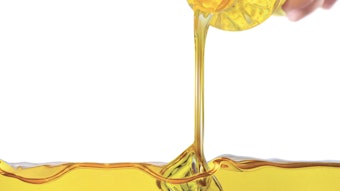
According to the online florist Bloom & Wild, sunflowers were named such because they move to face the sun.1 In fact, the scientific name for the common sunflower, Helianthus annuus, is derived from the Greek word for sun, helios, and flower, anthus.
In Greek mythology, the sunflower origin story describes a nymph named Clytie, who was in love with Apollo, the God of Sun. He initially loved her, too, but Apollo’s attention turned toward another nymph. This drove Clytie, in a jealous rage, to expose their love to the nymph’s father, who buried his daughter alive as punishment.
Apollo was so angry that he retaliated by turning Clytie into a sunflower. Her love for him endured, however, and she watched him move across the sky every day, following him as sunflowers pursue the sun.
Sunflowers in History
Sunflowers are a group of approximately 70 species of herbal plants of the aster family.2 They are native primarily to North and South America, although commercialization also took place in Russia.3 Sunflower was a common crop among American Indian tribes. Evidence suggests the plant was cultivated in present-day Arizona and New Mexico as early as around 3,000 B.C. Some archaeologists suggest the sunflower may have been domesticated before corn.3
According to the National Sunflower Association, the North American plant was taken to Europe by Spanish explorers around 1500. It became widespread throughout present-day Western Europe mainly as an ornamental, but also for some medicinal uses. By 1716, an English patent was granted for squeezing oil from the sunflower seed.3
Sunflower became popular as a cultivated plant in the 18th century, with most credit given to the Russian tsar Peter the Great. Around that time, in the 1700s, the Russian Orthodox Church also increased its popularity by forbidding the consumption of most oil foods during Lent, except sunflower, which was not on the prohibited list and therefore gained popularity as a food.4 By 1830, the manufacture of sunflower oil was carried out on a commercial scale and by the early 19th century, Russian farmers were growing more than two million acres of sunflowers.3
Related: Global Sunflower Oil Market to Bloom 6% by 2033
Traditional and Modern Uses
Sunflowers were used in many ways by American Indian tribes. The seed was used for food, ground or pounded into flour to make cakes, mush or bread. Some tribes mixed the meal with vegetables such as beans, squash and corn. The seed itself was also eaten not only as food, but to act as a stimulant to increase appetite or alleviate fatigue for hunting or war parties.5 Oil squeezed from the seed was used to make bread.
Additional applications included as dye for textiles, body painting and other decorations.3 The dried stalk was used as a building material, and the plant and seeds were widely incorporated into ceremonies.3
Parts of the sunflower plant were used medicinally to: treat sores, swelling, snake bites, kidney ailments and chest pain, as an aphrodisiac, or in body ointments. The juice of freshly cut sunflower stems was applied as a home remedy to cuts and wounds, as smearing it liberally on the injured area and bandaging the wound was said to speed recovery without infection.5 Several other traditional uses of the plant include preventing prenatal infections, wart removal and alleviating rheumatism. The seed oil was applied to hair and skin as a dermatological aid.5
Today, the common sunflower (Helianthus annuus) is valuable from an economic and ornamental point of view. Some species are still cultivated as ornamentals for their large flower heads.2 The leaves are used as: fodder, sunflower oil cake, for stock and poultry feeding, flowers, to produce yellow dye and the seeds, as food. The seeds are eaten dried, roasted or ground into nut butter; they also are common in birdseed mixes.2
The sweet yellow oil obtained by compressing the seeds is considered equal to olive or almond oils for table uses. The oil is also used in soap, paints and even as a lubricant.2
Continue reading about the skin benefits of sunflower in our October Digital Magazine...
Rachel Grabenhofer is the managing scientific editor of Cosmetics & Toiletries, Skin Inc.’s sister brand for cosmetic chemists. She’s a member of the Skin Microbiome Council and Society of Cosmetic Chemists, and for several years, led judging panels to honor the best ingredients in cosmetics.











